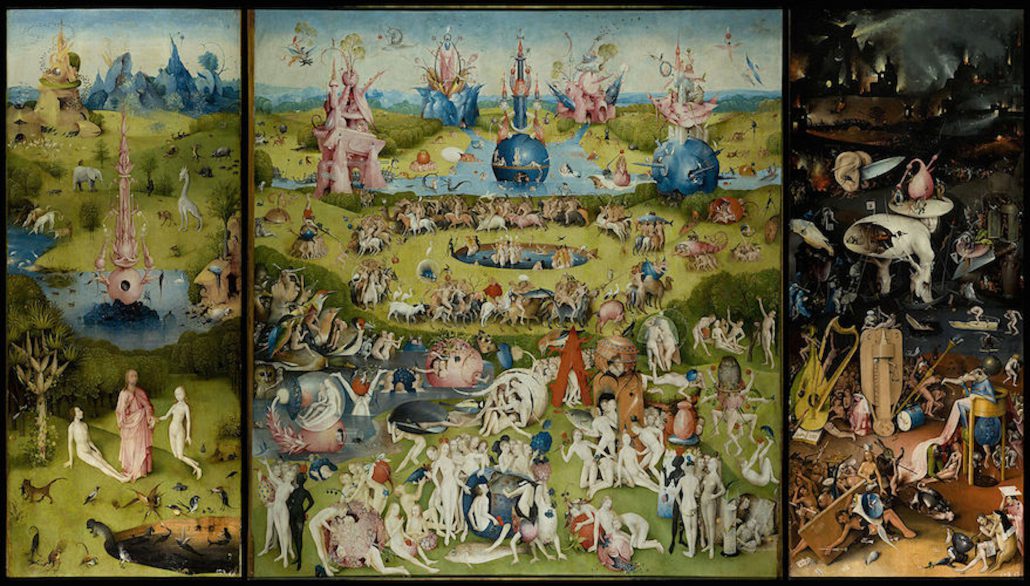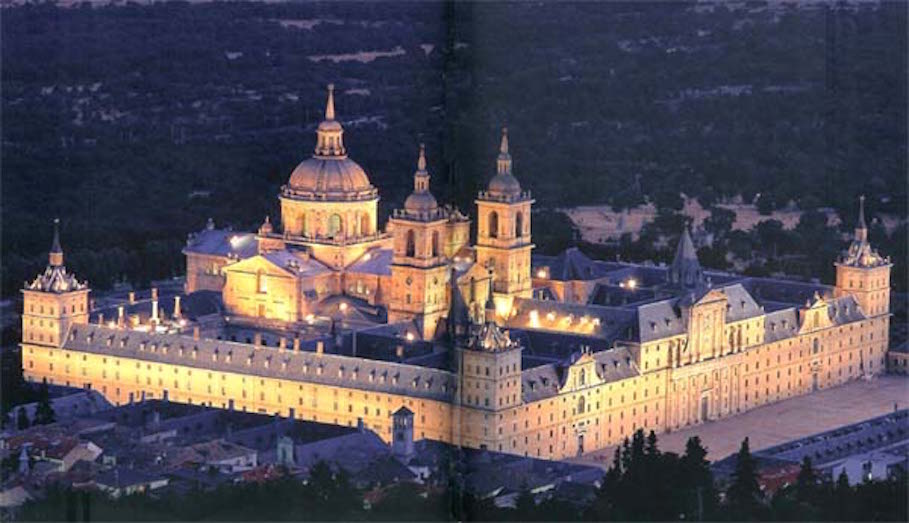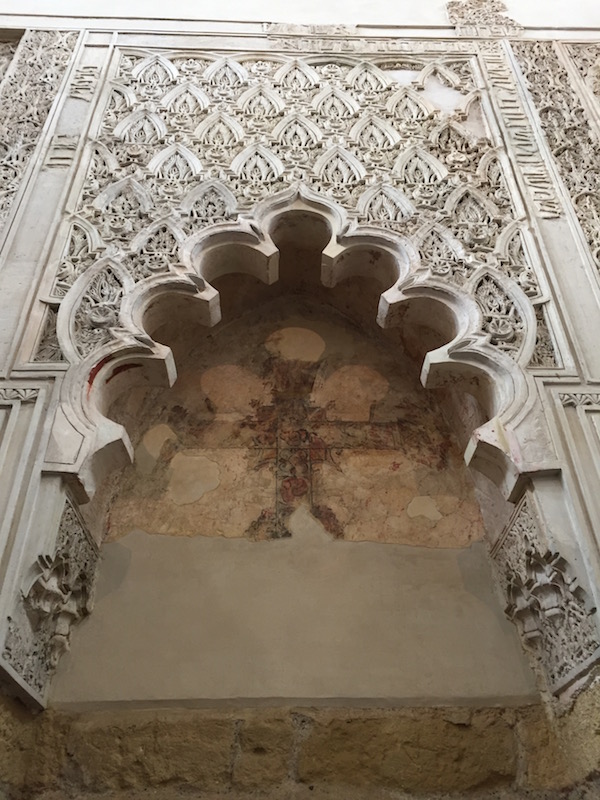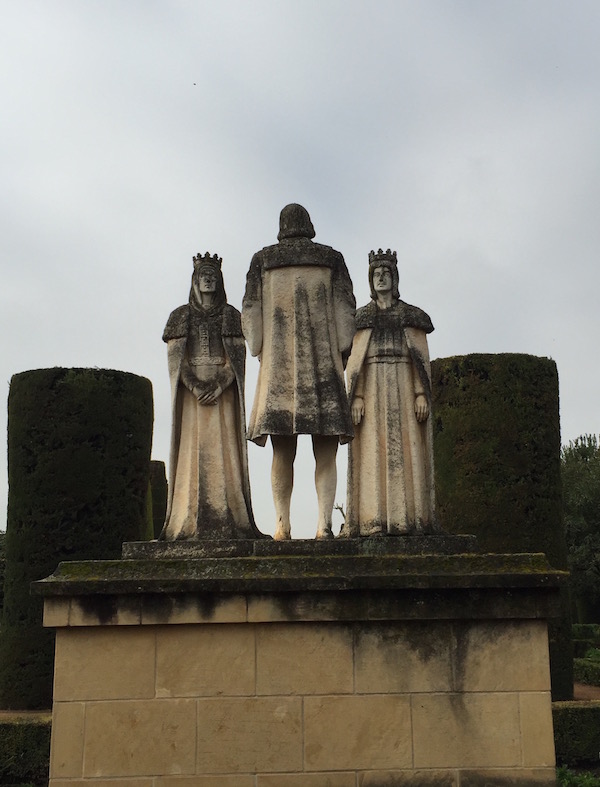London, Brussels, Amsterdam and Paris | Treading Common Ground
Becca Quist documents her experience on the 2016 Travel Study program Domestic and Foreign Politics in Europe.
Becca Quist documents her experience on the 2016 Travel Study program Domestic and Foreign Politics in Europe.
BY CELIA CODY-CARRESE
One of my favorite works of art is The Garden of Earthy Delights by Hieronymus Bosch. A triptych painted around 1500, its three scenes depict the Garden of Eden, an excess of human pleasure on Earth, and a bizarre underworld. It’s fantastical and surreal and thus very ahead of its time, as the surrealism movement in the art world didn’t occur for centuries later. Every time I look at this painting I see something new, some detail I didn’t catch before – since there is just so much going on. Lucky for me, The Garden is housed at the Prado museum in Madrid, and I got to see it in person this past weekend. It’s displayed on a table in the middle of a gallery room, demanding attention. If you’ve ever had a favorite piece of art or even a favorite song, you know that seeing it up close, or hearing it live, is a special experience.

Little did I know that Hieronymus Bosch has an interesting connection to Spanish History, and that I would learn about him in my class at UCO Córdoba! Last week, my History professor pulled up the painting on Google Images and explained that the painting once belonged to Felipe II, considered one of the most important kings in Spain’s history. Felipe was extremely powerful and controlled vast territories, but at the end of his life he became a recluse, never leaving El Escorial, a grand palace he built for himself. As my professor explained, Felipe was extremely paranoid and convinced that the souls of his enemies were inside the people depicted in The Garden of Earthly Delights. Furthermore, within El Escorial Felipe had many Bosch paintings, which he arranged around his bedroom and stared at all night, instead of sleeping. He also unfortunately burned many of these paintings – but thankfully not The Garden.

This story is really interesting to me because I already loved this painting, but also because it illustrates to me the core of what study abroad is about. I didn’t even know Bosch’s masterpiece was in Spain until I was looking up information about the Prado before I went. And I also wasn’t aware of the connection it had to Spain’s extremely powerful and influential king. To learn about it all here, and have the opportunity to see it in person, is probably the best example of “hands on learning” I’ve ever experienced.
And this isn’t the only such example of history, art, and my environment interacting in this way. Andalucía, and specifically Córdoba, were under Muslim rule for many years before the Christians came into power. During the 10th and 11th centuries, Córdoba was the capital of the Califate in Europe, Al-Andalus, and a place where Christians, Muslims, and Jews lived in relative harmony. Muslims had higher social standing and didn’t have to pay taxes, but there was not regular discrimination or violence based on religion. One of my favorite things about Andalucía and Córdoba in particular is this example of religious tolerance and coexistence. The city’s history is preserved in the architecture, such as the Mosque-Cathedral and the city’s synagogue. But it also shows up in smaller, less obvious ways, scattered throughout the city. For example, there is a small symbol you can find in various historical sites in Andalucia – my professor told me so far he has found 23 in Córdoba. It is a brass plaque on the ground, an image of Spain and Portugal which is made up of Hebrew letters. The symbol serves as a reminder of the Jewish community in Al-Andalus. I have seen one of these in Toledo as well, and they can be found in many cities that were once part of Al-Andalus. In both Córdoba and Toledo you can find synagogues, still preserved from the time when Jewish communities lived in Spain. We visited the synagogue in Córdoba on a class trip, and the interior decorations were strikingly similar to the Alhambra in Granada. The exchange of design techniques and aesthetics is clearly on display among these very distinct buildings.
Plaque of Iberian Peninsula with Hebrew letters

Synagogue in Córdoba, with Hebrew inscriptions, Arabic designs, and a painted cross

In addition to being a city of religious and cultural exchange, Córdoba was also an important political city. For the Romans, Muslims, and eventually Christians, Córdoba was a place of administrative and strategical importance. During Fernando and Isabel’s rule they lived in Córdoba, and from there directed the military campaign to expel the Muslim’s from Granada. It was at the Alcazar palace in Córdoba that Christopher Columbus came to make his case for exploration to Fernando and Isabel, and they agreed to fund his journey. We went to the Alcazar on a field trip, and in the gardens there is a statue to mark the event.
Fernando and Isabel receiving Columbus

At the Alcazar there is also a room where many Roman mosaics are on display. These mosaics were created in the 2nd and 3rd centuries when the Roman Empire extended to Spain, and were discovered under a large plaza in Córdoba. The mosaics were originally the floors of homes belonging to wealthy families, and were reconstructed piece by piece for the current display. Because Córdoba was the capital city for different societies throughout history, each of them essentially just built on top of the previous civilization. Archeologists can’t uncover all of the ruins because they would literally have to tear down the current city to do so!
One of the Roman mosaics at the Alcazar in Córdoba

My history professors have both talked about what they see as a lack of historical memory in Spain. In their view, many Spanish people think of Spanish as being Catholic and European, while not understanding the historical significance of Al- Andalus and the Muslim and Jewish populations here. Similarly, in school children learn about Columbus “discovering” the new world and what a success it was for Spain, without discussing the disastrous effects his voyage had on Native Americans. Evidently, we have the same problem in the United States – I didn’t learn the other side of the story of Columbus until I was in high school. Many Americans also lack an understanding of the racial dynamics and systems of oppression throughout America’s history, which still continue today.
We travel to other countries to learn about another culture, another history, different people. This culture and history is enshrined in the streets and buildings we find ourselves amongst, in art and in stories. But the truth is there are different stories and cultures wherever we are, whether we are in our hometown or in an entirely new place. We just have to be willing to ask questions and to notice what’s around us – no matter where we are.
Celia Cody-Carrese studied abroad in Cordoba, Spain, in Winter 2017: http://eap.ucop.edu/OurPrograms/spain/Pages/exploring_andalucia.aspx
